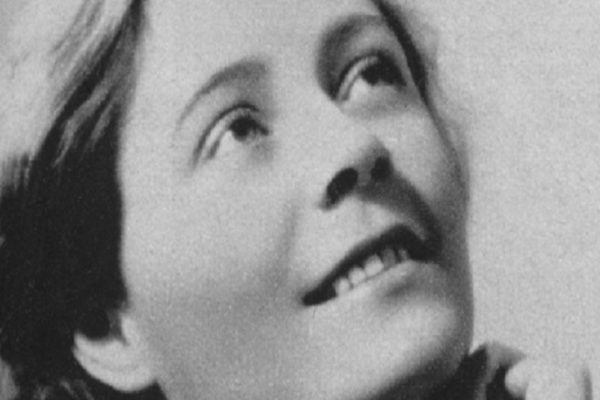The Heligonka or Helikónka (in Slovak: Heligónka) is a Czech and Slovak musical instrument similar to the Melodeon or Alpine Steirische Harmonika.
The actual history of this instrument is unknown, as is the exact individual enterprises where the production began. (The Novak company was created in the year 1874 – and they produced the steirische Harmonika) so it is therefore safe to say that they most likely existed before the end of the Austrian monarchy.
Instruments from the workshop of Josef Hlaváček are the ones which are most well-known.
In the museum of musical instruments a Heligonka by Josef Hlaváček is on display and is dated to the year 1900.
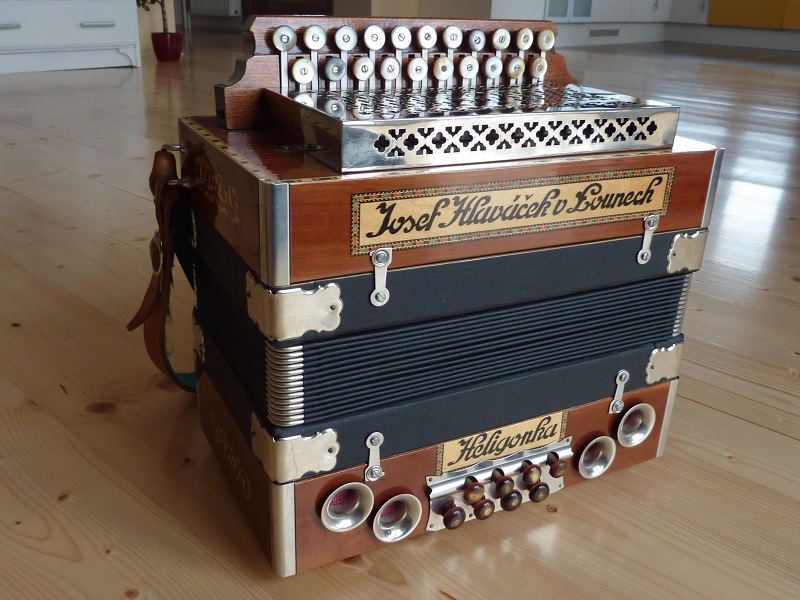
There is also a record from 1892 of a Harmonikschule for Autodidacten (source: Cesko slovanska skola per samouky ku hre well dvouradovou 19-klapkovou harmoniku. Böhm. – slav. – boh. Laun, Venta 1892.)
Josef Hlaváček led its enterprise first in Prague, and then later moved it to Louny, where today we still find Harmonika production.
At the beginning Josef co-operated with his brother-in-law Konstantin Stibitz, but later discrepancies among them led to the fact that Konstantin Stibiz left the company and then, under his own name in České Budějovice, likewise began to build the instruments.
There were other manufacturers besides these two, for example J. Kebredle in Hořovice.
With the onset of the Second World War, the tradition of making this lovely instrument expired nearly completely.
The Heligonka differs from the Melodeon by having a supplemented and amplified bass part.
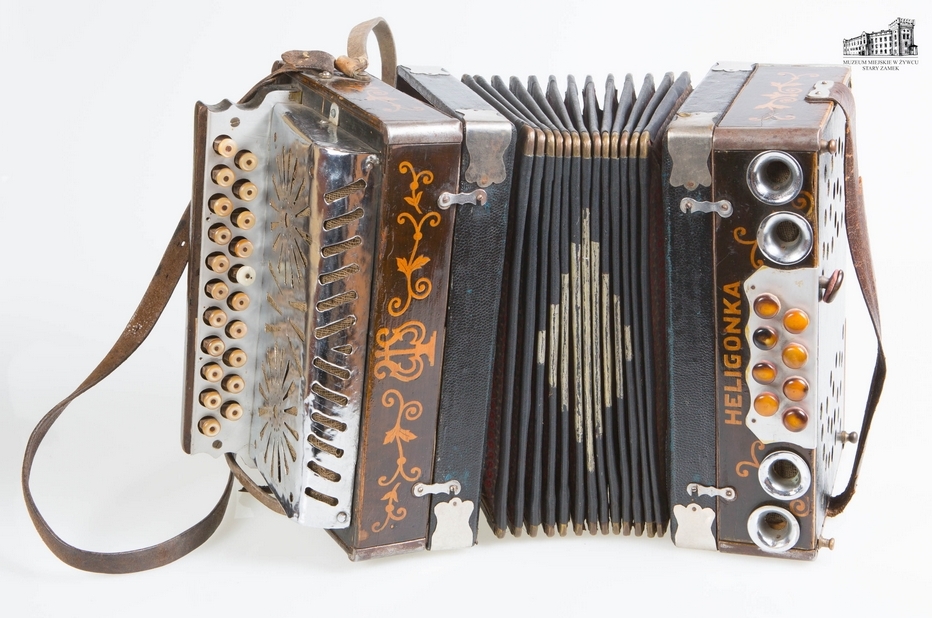
A heligonka is basically a regular (very often 4th button start) two-row diatonic accordion with helicon bass reeds and gleichton on the internal row.
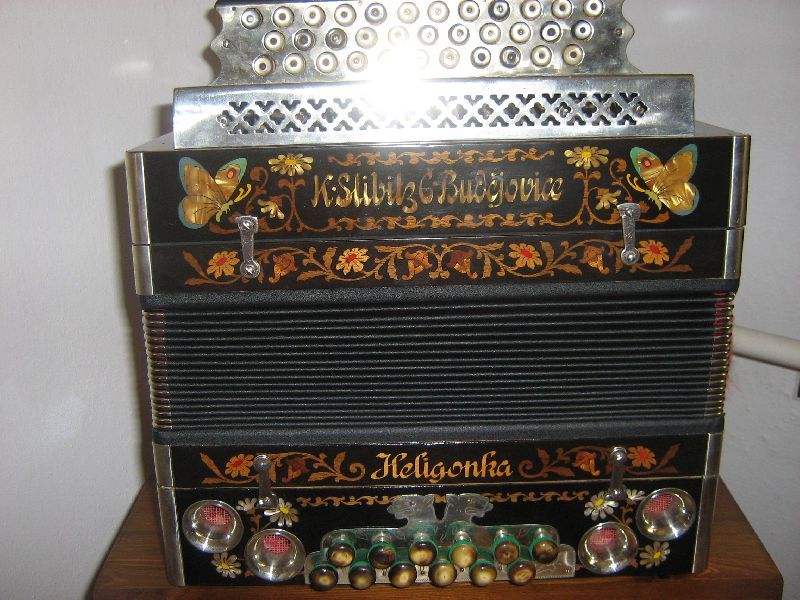
The basses are arranged exactly the same way as on a regular 8-bass melodeon (no Club system, no Steirische bass). The positions of the bass buttons on the inner row are a bit shifted, though.
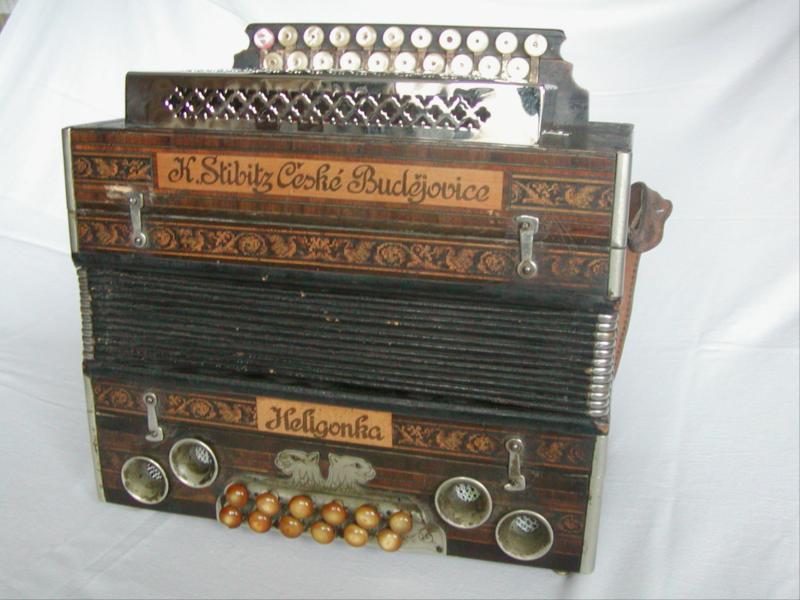
The front panel of the bass side compartment has horn-shaped holes for the helicon bass reeds.
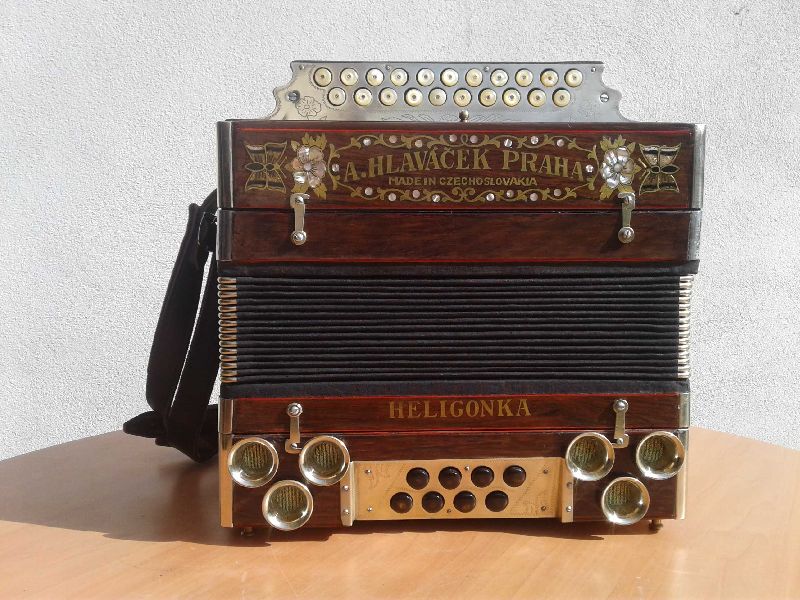
The air button on the left side is really an old style push button.
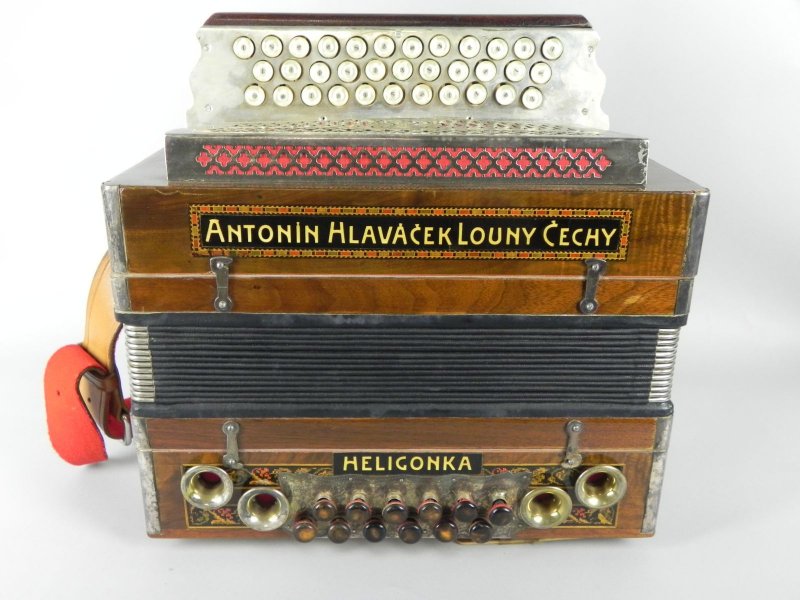
To make clear…
A “Steirische” is played in Austria, Bavaria, Slovenia, Italy.
A “Heligonka” is played in Czech Republic, Slovakia.
The “Steirische” has 3 to 5 rows, a specific bass layout and gleichton buttons.
The “Heligonka” has 2 to 3 rows, a standard bass layout and no gleichton buttons.
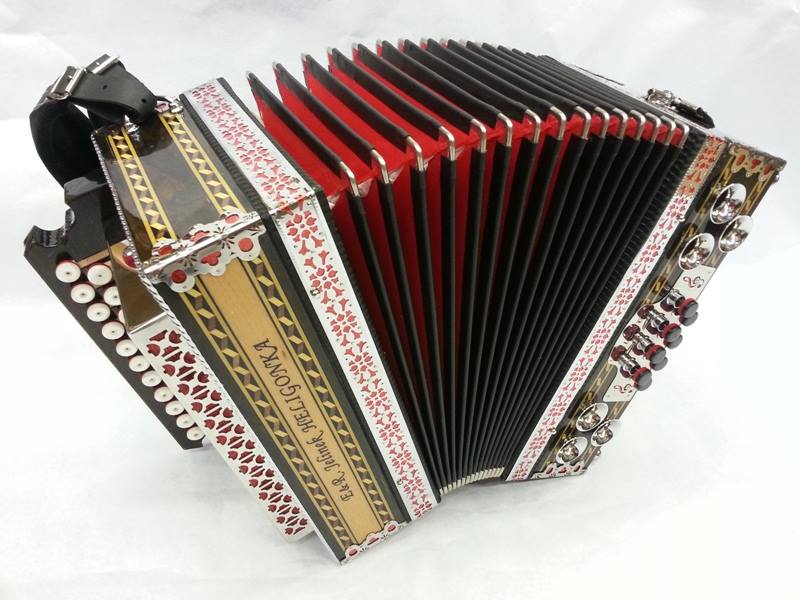
Both types have a common history .. they have been developed during the Austria-Hungarian empire (Parts of Italy, Czech Republic and Slovakia were part of Austria and Slovakia was part of Hungary then).
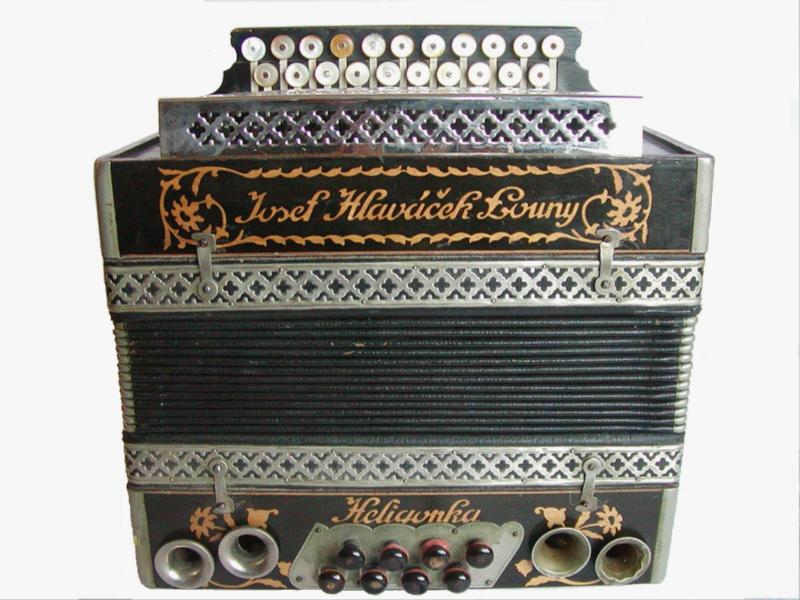
The (historic) folk music culture of Bavaria, Bohemia (western part of Czech Republic) and Bavaria is quite similar this is why the instruments are also quite similar.
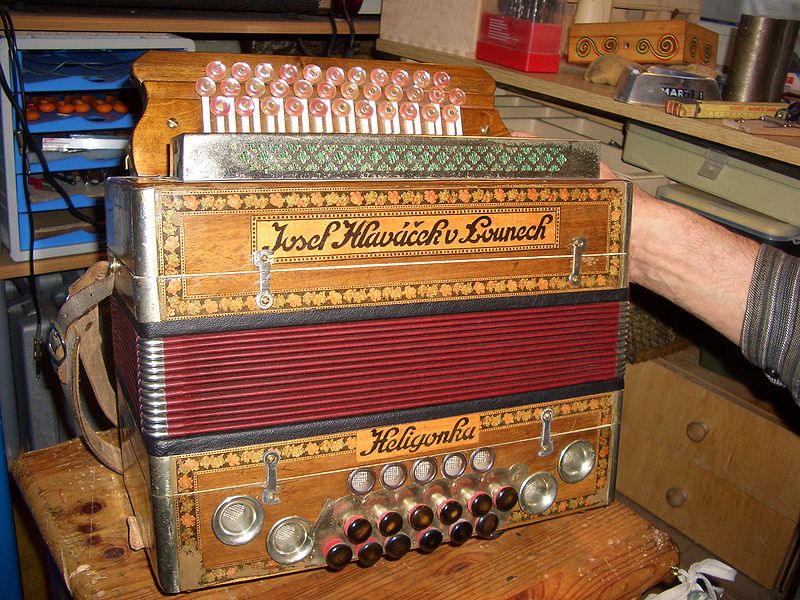
There is a beautiful one for sale on eBay right now… Click here for more info.
So what does this lovely instrument sound like?
Below are some videos for you to enjoy.
https://www.youtube.com/watch?v=fxFhddn1LLI
https://www.youtube.com/watch?v=mfER83_yhYc
We also had to share this talented young man…
Finally, we leave you with this…
Variations of the instrument are produced by Firma Delicia in Hořovice.
A man named Zdeněk Koutný momentarily leads the follow-up enterprise. More information.
Jiří Koucký, is a Harmonikabauer in close proximity to Prague. Visit his website.
This is how they are made…
As we mentioned before, there is a beautiful one for sale on eBay right now… Click here for more info.
If you have not already subscribed to get TresBohemes.com delivered to your inbox, please use the form below now so you never miss another post.
Remember, we rely solely on your donations to keep the project going.
Become a friend and get our lovely Czech postcard pack.




